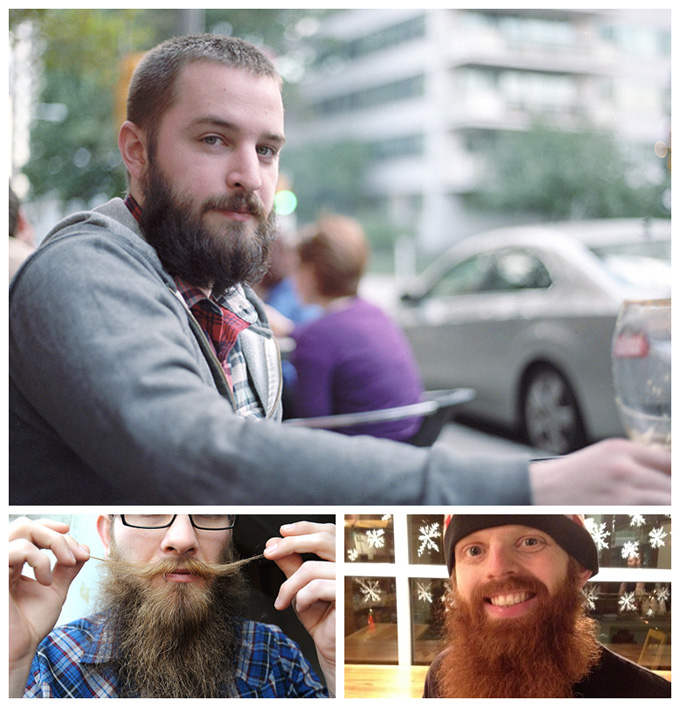Featured Indicators
 Fixies
Remember how the Segway was going to revolutionize everything? Back in 2001, pre-launch hoopla procl...
Fixies
Remember how the Segway was going to revolutionize everything? Back in 2001, pre-launch hoopla procl...
 Freeganism
It used to be that anything in the garbage was, well, kind of gross. And to a huge swath of the Amer...
Freeganism
It used to be that anything in the garbage was, well, kind of gross. And to a huge swath of the Amer...
Cultural Indicator
Beards

When Darwin’s theory of evolution by natural selection was first popularized among the Victorian intelligencia, many people rejected his ideas unequivocally, because they believed “Man” to be a creature of such exalted refinement, such moral and spiritual superiority, that it was simply impossible that we could have descended from hairy filthy animalistic tree-dwelling creatures.
Ever since the advent of agriculture 10,000 years ago and the beginnings of class distinctions within the human species, we have had an extremely uneasy relationship with our evolutionary heritage. A lot of this discomfort comes from elitism — for the past several thousand years, wealthier people were able to live further from a state of nature than non-wealthy people (helped along by slaves/servants), and the differences in grooming between peasants and princes were quite dramatic. If we follow the history of fashion, we can see the evolution of the elaborate costumes and grooming rituals that people went through in order to appear as high-status as possible (and attract high-quality mates — the ultimate goal prescribed to us by our genes).
It all comes down to the socioeconomic concept of conspicuous waste (coined by a prescient Veblen in 1899) — in order to display high status, people will spend large amounts of time, money, and resources on unnecessary things that show that they are not of the lower classes — and hence, do not have to labor. What do laborers do? They use their hands and feet a lot, they sweat and get dirty, they live on limited means and have little time for “leisure” pursuits. Once you see the world through this filter, you can see cultural artifacts of conspicuous waste everywhere: long painted fingernails, manicured lawns, expensive jewelry and watches, stiletto heels, elaborate hairstyles, “nice” clothes that need ironing and dry cleaning, fancy underwear, cut flowers (not wildflowers), expensive non-local foods, showy celebratory events, hyper-clean “luxury” cars, anything with “luxury” in its name.
So what’s the deal with all the beards nowadays?
There’s a deep aesthetic shift going on right now in our culture, and in due time, we will look back at photos of people with contemporary mainstream grooming standards as we do at old pictures of bound feet or corseted waists — with pity and horror at how destructively blind we once were.
In the 1950s, we fetishized mass-produced frozen food because it represented cultural progress beyond the filthy farm. And just as we are now starting to seek out the handmade, to celebrate the wabi-sabi, we are just now beginning to see glimmers of a new way of personal grooming that’s actually hundreds of thousands of years old. It’s about the deep beauty of the natural, about the vibrancy of the human animal when living in harmony with oneself.
This new/old aesthetic was revived in the 1960s as a hippie revolt against 1950s strictures. The 1967 musical Hair celebrated free-growing body hair as a symbol of cultural freedom, and although the classic hippie aesthetic went underground for several decades, we are now seeing a resurgence in its spirit, this time tracking along with such indicators as the paleo diet, an “outdoorsperson” revival, barefoot running, and a small-but-growing incidence of ultra-hipster women sporting unshaven pits. Beards are an integral part of this anti-grooming pro-caveperson aesthetic — they’re what happen when you don’t waste time shaving every day, when you allow the natural to emerge. They’re also potent symbols of virility, much needed as salve for the psyches of today’s emasculated men, whose earning power and education levels, compared to women, have never been lower.
To most mainstream eyes, the human form left to its natural devices is still a bit disturbing. But at the edges, the ungrooming movement will continue to encroach, because to the fringe-attuned eye, the mainstream standard appears toxically artificial and dead. We are at a point now when even the “peasants” can afford hair dye and makeup, botox and boob jobs, long painted nails and straight white teeth, razors and lasers, fancy clothes and shiny jewels — and so the only place for culture to go is backwards, to a time when real beauty came from living an active life outdoors in the sunlight with clean air and water and food. Think of the difference between a sleekly radiant wildcat with glittering eyes, and a mangy obese housecat tricked out with a sparkling collar, and the aesthetic shift we’re describing becomes evident and imperative.
Will nail salons give way to urban gardening shops? Will ornamental plants give way to edible? Will high heels give way to shoes that can withstand unpaved ground? As we reclaim our ancient Darwin-given heritage bit by bit, the juxtapositions will become increasingly striking, and ornamental relics — social cues meant to signify a life of leisure and a distance from peasant-y earthy pursuits — may come to look as preposterous as corsets and bound feet to our contemporary eyes.
© egg, 2012. Excerpt from upcoming book by Hilary Bromberg, The Birth of Neonaturism.